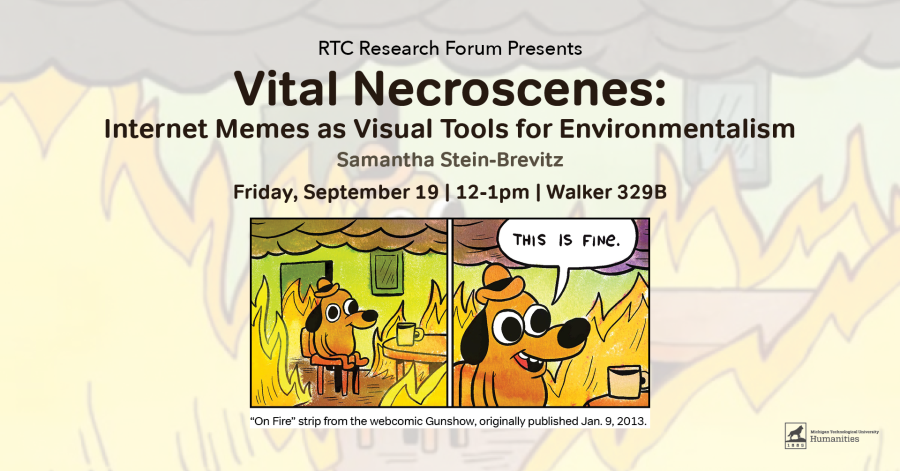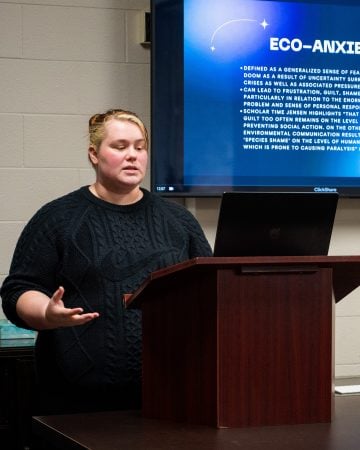What:
The RTC Research Forum, formerly known as the RTC Brown Bag, is a colloquium series sponsored by the Rhetoric, Theory, and Culture graduate program in the Michigan Tech Department of Humanities. Each month, faculty and students in the program present research on a wide range of topics. The forum offers an opportunity for colleagues and peers to discuss current research, prepare for formal conference presentations, and for students to receive feedback on presentation practices.
Abstract:
Understanding how we can approach environmentalism from a humanities perspective calls for an interdisciplinary approach that encompasses not only our place in the world but everything’s place in the world—human and non-human. There is no question about the cruciality of a comprehensively ethical and conscious means of interacting with the planet. There have been multiple attempts and approaches to a better method to the human ways of existing on this planet. Recognizing how to course correct is easier said than done, however. This concept is large and, in and of itself, sublime. The visual analysis offered in this work will specifically work to break down and interpret common, widespread Internet meme formats, thus presenting how they can evoke a need for environmentalism in daily life. The pieces guiding my research are the “This is fine” dog as well as a variant of another common Internet meme, Spiderman(s) pointing at himself. Though these works are ambiguous and can be used in multiple contexts, the power of their messages can be used to approach a call for better environmentalism. Additionally, it reiterates the very real threat of contemporary climate disasters which can thus be used to reexamine the power and vitality expressed within these Internet memes. Guiding my definition and understanding of the vital necroscene, I specifically connect Immanuel Kant’s Critique of Judgement with Jane Bennett’s Vibrant Matter as well as Jill H. Casid’s “Necrolandscaping”. Both Kant, Casid, and Bennett emphasize the limitlessness in life and in death. Additionally, Kant writes about the judgment that is assigned to Nature. Nature, he insists, is viewed as this aimless mechanism—though it should not be that way. Taking this notion of purposiveness, I connect it directly to the attempts made by vital materialism and the necroscene to dismantle and trouble the black/white binary of life. The goal of vital materialism is to present the purposiveness within non-human phenomena. Further, these concepts connect to demonstrate that Nature is an assemblage of multiple and boundless human and non-human actants—to borrow from Bruno Latour. The presented research aims to demonstrate ways Internet memes can evoke a vital necroscenic approach, creating more awareness for the call to environmental humanities. In understanding the vitality of Internet memes, we can develop an understanding and potentially even an increased appreciation for the interconnectedness of both human and non-human lives.
Who:
Presented by RTC PhD student Samantha Stein-Brevitz.
Samantha’s research aims to explore the connections between Internet memes and the necrocene that is the death of the planet. Through humor, Internet memes serve as a communication tool to emphasize the vital need to recognize and act on planetary crises and assist in dismantling Nature vs Human. In an effort to evoke change, the images presented show the irony that “this is fine” and life goes on.
All are welcome to attend!
When:
Friday, September 19, 2025
Where:
Venue changed to Petersen Library, Walker Arts & Humanities Center

